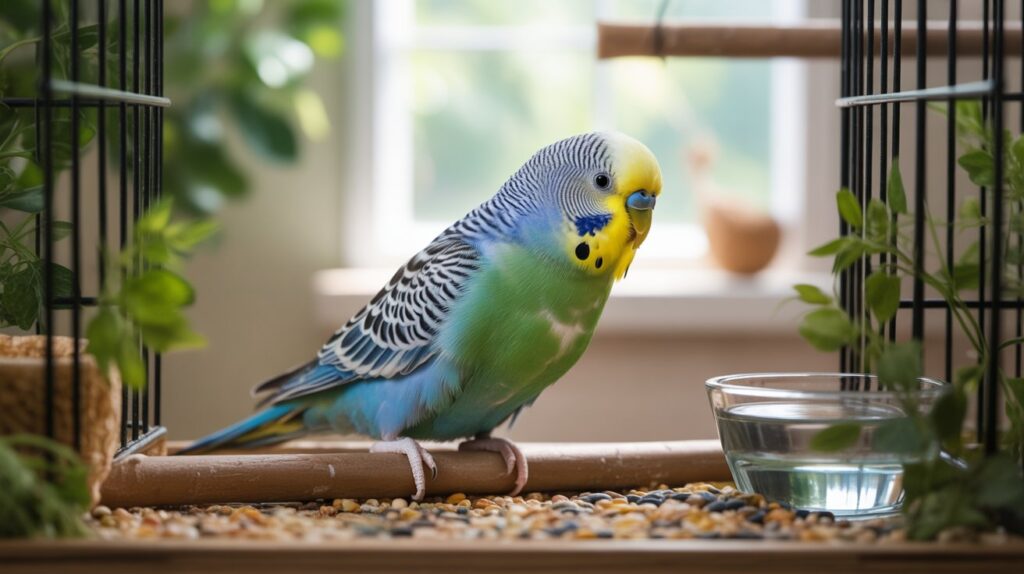Table of Contents
- Introduction: The Enduring Charm of the Budgerigar
- From the Australian Outback: Understanding Your Budgie’s Wild Origins
- Creating the Perfect Warm Habitat for Your Parakeet
- The Ideal Temperature Range
- Strategic Cage Placement
- Recognizing Signs of Temperature Distress
- Essential Budgie Care Beyond Warmth
- A Diet Fit for a Tropical Bird
- The Importance of a Proper Cage and Enrichment
- Social Needs: More Than Just a Single Bird
- Conclusion: A Thriving Partnership
- Frequently Asked Questions (FAQs)
Budgie Care Guide: Keeping Your Tropical Parakeet Happy and Warm
Introduction: The Enduring Charm of the Budgerigar
The Budgerigar, affectionately known worldwide as the Budgie or Parakeet, is one of the most popular companion birds, and for good reason. With their vibrant plumage, cheerful chattering, and intelligent, playful personalities, budgies bring a splash of tropical sunshine into any home. However, their beauty is more than feather-deep. These small parrots hail from warm climates, and their well-being is intrinsically linked to providing an environment that respects their tropical nature. Understanding their fundamental need for warmth is the first and most critical step to ensuring a long, healthy, and happy life for your feathered friend.

From the Australian Outback: Understanding Your Budgie’s Wild Origins
To properly care for a budgie, we must first look to its roots. Wild budgerigars are native to the arid and semi-arid inland regions of Australia. They are nomadic birds that travel in vast flocks, covering great distances in search of food and water. This environment has hardwired them with specific adaptations. They are accustomed to the dry heat and consistent warmth of the Australian continent. They are not built to withstand cold, damp conditions or sudden, drastic temperature drops. Their flocking nature also means they are highly social animals that thrive on interaction and feel secure in the presence of others. Remembering these two key facts—their need for warmth and their social dependency—is the foundation of excellent budgie care.
Creating the Perfect Warm Habitat for Your Parakeet
Replicating the warmth of the Australian outback is paramount. While you don’t need to turn your home into a desert, maintaining a stable and comfortable temperature is non-negotiable.
The Ideal Temperature Range
A budgie’s comfort zone is a consistent room temperature between 21−29°C (70−85°F). They can tolerate slight variations, but they should never be exposed to temperatures below 18°C (65°F) for extended periods. Keeping the temperature stable is just as important as the number on the thermometer. Wild fluctuations can stress their small bodies and compromise their immune systems.
Strategic Cage Placement
Where you place your budgie’s cage is crucial for maintaining its warmth and overall well-being.
- Avoid Drafts: Keep the cage away from drafty windows, doors, and air conditioning vents. A constant cool breeze can rapidly chill a budgie, leading to illness.
- No Direct Sunlight: While they enjoy a bright room, never place the cage in direct, unfiltered sunlight. This can cause the cage to overheat, leading to heatstroke.
- Social Hub: Position the cage in a room where the family spends time, like a living room. This satisfies their social needs and keeps them in a consistently heated part of the home.
- Elevated Position: Place the cage at chest height. This helps the budgie feel secure and keeps it away from any cooler drafts that may linger near the floor.
Recognizing Signs of Temperature Distress
Your budgie will give you clear signals if it’s uncomfortable.
- Too Cold: A cold budgie will fluff up all its feathers to trap air for insulation, may shiver, and will often be lethargic and huddled in a corner.
- Too Hot: An overheated budgie may pant with an open beak, hold its wings slightly away from its body to cool down, and show signs of distress or agitation.
Essential Budgie Care Beyond Warmth
A warm environment is just one piece of the puzzle. To truly thrive, your tropical parakeet needs holistic care.
A Diet Fit for a Tropical Bird
In the wild, budgies eat a variety of seeds, grasses, and plants. A diet of only seeds is unhealthy and can lead to obesity and nutrient deficiencies. A balanced diet should consist of:
- High-Quality Pellets: These should form the base of their diet (60−70).
- Fresh Vegetables: Offer finely chopped leafy greens (like kale and romaine lettuce), carrots, broccoli, and bell peppers.
- Seeds: Use seeds as a treat rather than the main course.
- Fresh Water: Ensure clean, fresh water is available at all times.
The Importance of a Proper Cage and Enrichment
A budgie’s cage is its castle. It should be a place of safety and fun.
- Size: Choose a cage that is wider than it is tall to allow for horizontal flight.
- Bar Spacing: Ensure the bar spacing is no more than 1.25textcm (frac12 inch) to prevent injury.
- Enrichment: Provide a variety of perches of different textures and diameters to exercise their feet. Offer plenty of toys like bells, ladders, and shreddable items to keep their intelligent minds engaged.
Social Needs: More Than Just a Single Bird
Budgies are flock animals that crave companionship. A lone budgie will depend entirely on its human owner for social interaction. Spend time talking to, playing with, and taming your bird daily. If your lifestyle doesn’t allow for several hours of interaction per day, consider getting a second budgie to keep it company.
Conclusion: A Thriving Partnership
The budgie, or parakeet, is a truly remarkable tropical bird whose cheerful presence can brighten any home. Their care, however, goes beyond simply providing seed and water. By respecting their natural origins and providing a consistently warm, stable, and enriching environment, you are not just keeping a pet—you are nurturing a sensitive, intelligent creature. A warm home, a balanced diet, and dedicated companionship are the keys to ensuring your tropical parakeet doesn’t just survive, but truly thrives for years to come.
Frequently Asked Questions (FAQs)
Q1: What is the absolute ideal temperature for a pet budgie? A: The ideal temperature range for a budgie is between 21−29°C (70−85°F). Most importantly, the temperature should be kept as stable as possible.
Q2: What is the difference between a budgie and a parakeet? A: All budgies are parakeets, but not all parakeets are budgies. “Parakeet” is a general term for a large group of small to medium-sized parrot species with long tail feathers. The Budgerigar is a specific species of parakeet native to Australia. In many countries, especially the US, the names are used interchangeably for this specific bird.
Q3: How can I tell if my budgie is cold? A: The most common sign is the bird fluffing up its feathers for an extended period to create an insulating layer of air. It may also shiver, tuck its head, stand on one leg, and become quiet and lethargic.
Q4: Do budgies need a special heat lamp? A: In a home with stable central heating that stays within the ideal temperature range, a heat lamp is usually not necessary. However, if your home is drafty or you live in a very cold climate, a bird-safe heat lamp or panel placed at one end of the cage can provide a warm spot for them to retreat to.
Q5: Can I keep my budgie’s cage outside? A: It is generally not recommended to keep a budgie’s cage outside permanently due to the inability to control temperature fluctuations, exposure to predators, and risk of disease from wild birds. Supervised outdoor time in a secure cage on a warm, calm day can be beneficial.
